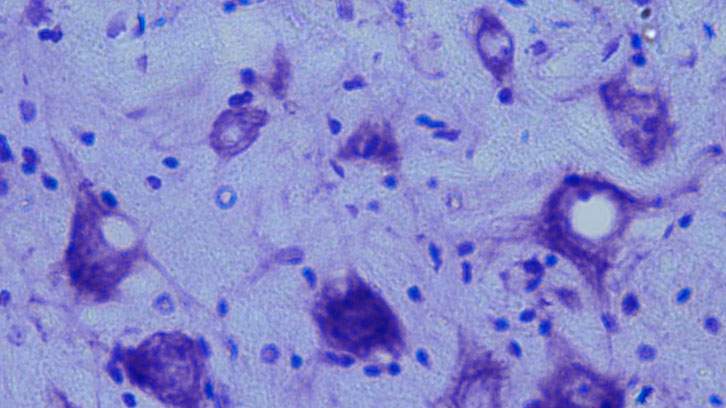Gene therapy for overexpressing Neuregulin 1 type I in skeletal muscles promotes functional improvement in the SOD1 ALS mice

A team coordinated by Professor Xavier Navarro, of the Department of Cellular Biology, Physiology and Immunology, and of the Institute of Neurosciences, has observed that increasing the expression of type 1 Neuregulin protein in mice used as a model for the study of Amyotrophic Lateral Sclerosis (ALS) slows the evolution of the disease. These results show that this therapy could be considered in the future as a treatment for ALS.
Amyotrophic lateral sclerosis (ALS) is a degenerative disease that affects the neurons that control the muscles and control the voluntary movements, named motoneurons, first causing their disconnection from the muscles and then their degeneration and death. These motoneurons are located in the brain and the spinal cord. The progressive degeneration causes the skeletal muscles to weaken more and more until the essential muscle for breathing, the diaphragm, is affected causing the death of patients due to respiratory failure. Between 90 and 95 percent of all ALS cases occur sporadically of unknown cause, whereas the rest, between 5 and 10 percent of cases, are inherited and associated with a specific genetic defect. There is no effective treatment for ALS and patients who suffer this disease have a life expectancy of only two to five years.
The mechanisms involved in this disease are complex and the main cause is unknown. One of the proteins that has been postulated to have an important role is Neuregulin 1 (NRG1). There are several subtypes of this protein, with different functions each. Recent studies have shown that type I of NRG1 (NRG1-I) is essential in the connection of neurons with muscles, as well as others have indicated that type III of NRG1 is expressed at a lower level in the spinal cord of patients with the disease, as well as in the mouse model that we use to study ALS. These mice have a mutation in a gene (superoxide dismutase 1, SOD1) that makes them develop a disease with symptoms similar to those of patients.
The main goal of our study was focused on increasing the levels of NRG1-I protein in the entire skeletal musculature of the SOD1 mice to try to stop or at least slow the progression of the disease. For this reason, we have used a technique called gene therapy, which is based on using viruses that have infective capacity but only to increase the expression of the gene of interest, in this case NRG1-I in the mouse muscles, which will subsequently cause an increase of the protein. This technique allows maintaining the expression of our gene of interest throughout the progression of the disease in an effective way. The results showed that mice with higher levels of NRG1-I began to develop symptoms of the disease later, as well as had a slower disease progression than the controls. In addition, this therapy promoted an increase of the number of surviving motoneurons in the spinal cord compared to control mice, as well as improved preservation of their connections with skeletal muscles. Therefore, the NRG1-I protein has an important role in the evolution of the disease and our results show that this therapy could be considered in the future as a treatment for ALS.
Department of Cellular Biology, Physiology and Immunology.
Institute of Neurosciences.
Universitat Autònoma de Barcelona.
References
Mòdol-Caballero G, Herrando-Grabulosa M, García-Lareu B, Solanes N, Verdés S, Osta R, Francos-Quijorna I, López-Vales R, Calvo AC, Bosch A, Navarro X. Gene therapy for overexpressing Neuregulin 1 type I in skeletal muscles promotes functional improvement in the SOD1(G93A) ALS mice. Neurobiol Dis 2020; 137:104793.
doi: 10.1016/j.nbd.2020.104793.

